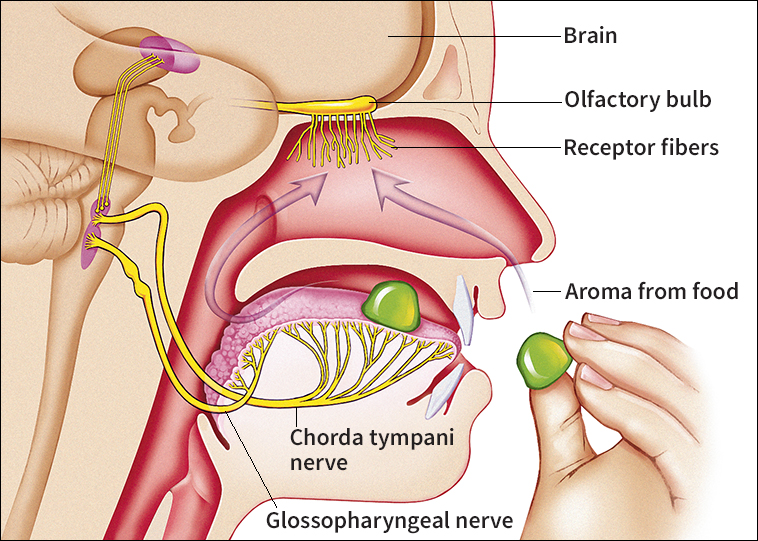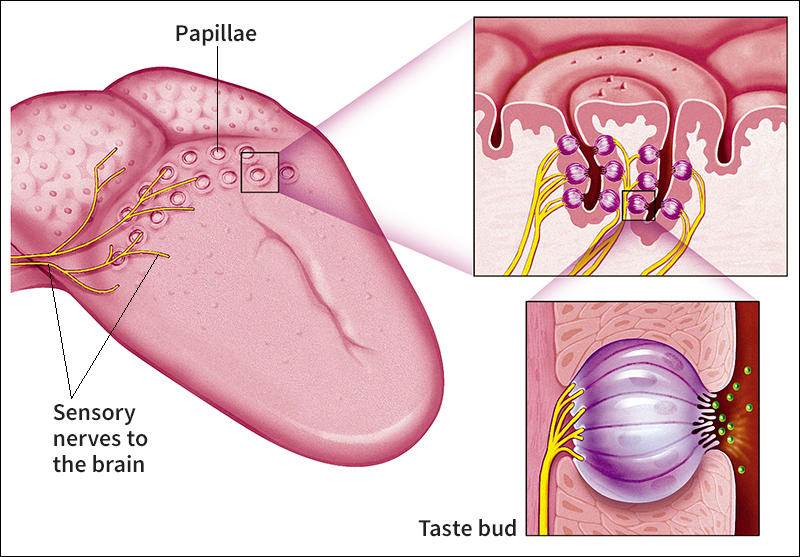Taste is an important sense by which human beings and animals detect many chemicals in their environment. In the body, specialized skin cells that detect taste are grouped into clusters called taste buds. They are found primarily on the tongue. Taste buds on the tongue occur within small mounds called papillae. Taste buds also are present on the soft palate (back of the roof of the mouth) and other parts of the mouth and throat. The word taste refers to the quality of a substance that is detected by the taste buds. Taste is a component of flavor. But flavor also includes smell, touch, and temperature sensations.

Chemicals associated with the taste qualities of sour, salty, bitter, and sweet stimulate receptor cells of the taste buds. Some scientists think a fifth distinct taste, called umami, can be detected. This taste is usually described as “savory” or “meaty.” Japanese scientists were the first to describe it, The sensation of umami is caused by a chemical called glutamate. Glutamate is found in many protein-rich foods. However, not all scientists agree that umami constitutes a fifth category of taste.
The taste receptor cells in taste buds are connected to branches of three cranial nerves. These nerves connect directly to the brain. Taste sensation begins when these receptor cells are stimulated by chemicals from food or other substances dissolved in saliva. When taste cells are stimulated, they transmit sensory signals to the medulla. The medulla is the lower part of the brain stem. Here, some taste signals are separated and travel to the front of the brain stem to the area called the thalamus. From the thalamus, the signals move to the cerebral cortex. The cerebral cortex is the part of the brain that controls higher brain functions. At the cerebral cortex, the brain interprets the nerve signals it has received. We thus become aware of taste.

Most cells in the taste buds are sensitive to two or more taste qualities. The sensation of distinct tastes comes from responses by nerve cells creating a pattern of activity within the brain. The nerve cells themselves cannot distinguish different tastes. But most cells respond more strongly to one type of taste. Scientists have discovered genes that control the action of receptor cells, including those responsible for sweet and bitter taste.
Taste plays a major role in avoiding foods that may be harmful. Many carbohydrates taste sweet. Many poisonous substances are bitter. Most animals, including human beings, will readily accept sweet foods and reject bitter foods. Illness associated with the consumption of a well-defined taste often results in a long-lasting dislike of that taste. This dislike can occur after a single instance of a particular taste associated with illness. It may develop even if the illness begins two or more hours after the food is eaten.
Taste also affects how the body regulates metabolism, nutritional balance, and even mood. In human infants and other animals, experiments have shown that sweet tastes have a calming effect and cause an increased tolerance to pain.
